Under-eye dark circles can be difficult to treat due to a variety of factors, such as heredity, lifestyle, and aging. However, there are various methods for reducing the look of under-eye dark circles. Everyone around us is always telling us about ways and means to protect our skin from damage when we are outside, whether it is from harsh weather, the hot sun, or pollution. But did you realise that something as simple as taking a shower can hurt your skin? This blog serves as an A-Z approach to addressing this prevalent topic.
Easy skin care tips for treating dark circles
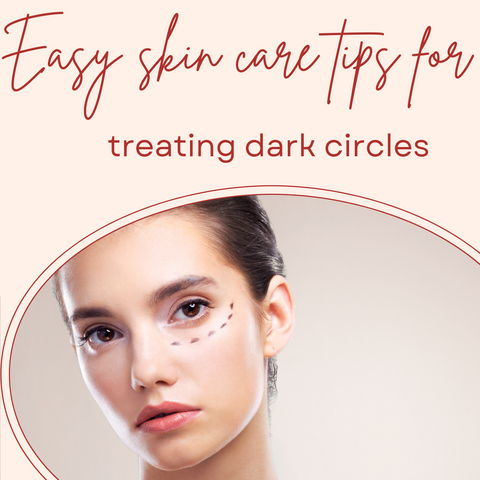
If you are looking for simple and effective skincare tips to reduce dark circles, here are some of the most common showering mistakes we all make:
-
Don't make it too hot! We all love a comforting hot bath every once in a while! But be careful; while the scalding water could be good for your nerves, it can be very damaging to the skin. It's better to avoid using extremely hot water when you shower; use lukewarm water instead. The reason is that hot water extracts all the moisture right out of your skin, leaving it parched and dry, which can further result in flaking, itching, and tightness.
-
Not too cold: Those of us who love a cold shower in the morning to awaken the senses. You also need to be careful! Going too cold is not a testament to tolerance levels but in fact can cause damage to your skin by dilating the blood in the face, causing redness, and eventually leading to the thickening of blood vessels, causing thread veins, which may not be the most attractive look for you eventually. So, if not lukewarm, try normal room temperature water, but definitely not cold.
-
To wash or not to wash: One of the trickiest questions while in the shower is whether to wash your face first or last, i.e., before or after the deed. Dr. Soin recommends washing your face post your shower, owing to the fact that by then the pores have opened up due to the steam & soak effect, which preps the skin for a more effective cleansing.
-
Get out already! A long shower after a stressful day might be your idea of getting some ‘me-time’ but spending too long and soaking the day away can leave the skin dry and irritated. Taking long baths or showers may even wash away the skin’s natural moisture. So, save your skin and some water while you are at it, and get out of the tub as soon as possible.
-
Rub a dab dab: While we may take our time in the shower, most of us are in a rush to get dried and dressed the moment we get out. Dr. Soin recommends taking a minute or five to gently pat oneself down rather than rubbing your skin aggressively in a rush, which might result in irritated or damaged regions. Using a soft towel to dab your skin using the pat dry technique rather than rubbing the towel firmly on the skin, especially on delicate areas like your face, may work better.
-
Moisturise, moisturise, and moisturise! This moisture mantra should be part of everyone's post-shower ritual! Bathing causes your skin's pores to open, making it more responsive to any moisturising lotion, cream, or serum you use. This makes now the ideal moment to take advantage of such products. So, get your favorite moisturiser in that bathroom drawer as soon as possible!
Skin Assessment
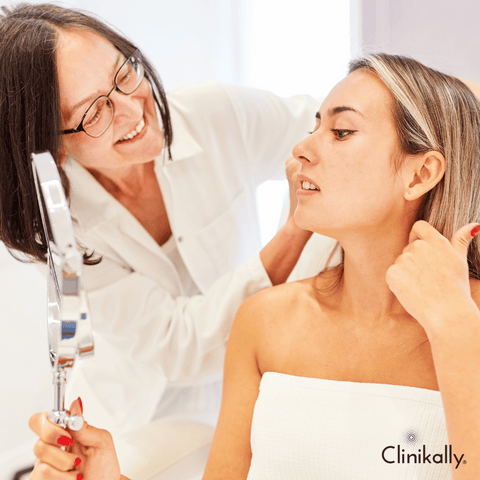
A skin assessment is a thorough examination of your skin's health, condition, and specific issues. It can be performed as part of your skincare routine by a dermatologist, esthetician, or oneself. Here's how to perform a basic skin assessment, including skin type identification, skin issues, washing routine, exfoliation, moisturization, sun protection, skincare products, food and hydration, lifestyle habits, allergies and sensitivities, expert consultation, and skin changes. Keep a skincare notebook or photograph your skin on a regular basis to document changes and improvements. A complete skin examination serves as the foundation for developing a personalised skincare regimen that targets your specific needs and assists you in achieving healthy, glowing skin.
Importance of proper sleep
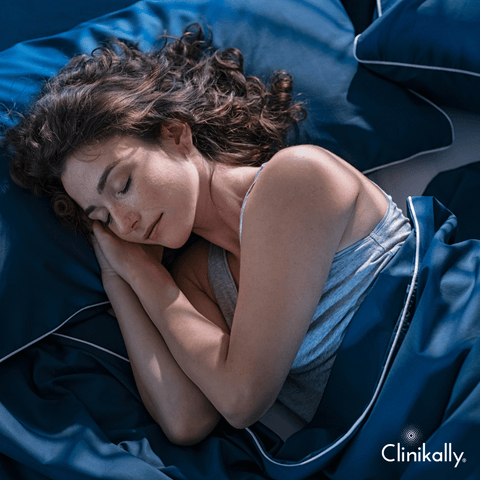
Sleep is essential for general health and well-being. It is essential in many facets of physical, mental, and emotional wellness. Here are some of the most essential reasons why obtaining enough high-quality sleep is critical:
-
Physical Health: Adequate sleep promotes a strong immune system, which assists your body in fighting off illnesses and infections. Deep sleep allows your body to repair and revitalise tissues, muscles, and organs. Sleep deprivation has been linked to an increased risk of heart disease, hypertension, and other cardiovascular problems.
-
Mental Health: Sleep is essential for good cognitive function, which includes remembering, problem-solving, and decision-making. Sleep is vital for mental stability and mood regulation. Sleep deprivation has been linked to mood disorders like despair and anxiety. A well-rested mind is more focused, alert, and capable of clear thinking.
-
Energy and Productivity: Sleep is associated with increased energy and productivity. When you're well-rested, you're more likely to finish activities efficiently.
-
Hormone Regulation: Sleep plays a role in the regulation of many hormones, including those that affect hunger and appetite. Sleep deprivation can contribute to overeating and weight gain.
-
Metabolism: Proper sleep promotes a healthy metabolism, assisting your body in maintaining a healthy weight and lowering the risk of obesity.
-
Stress Reduction: Sleep is an excellent natural stress reliever. It lets your body recover from the stresses of the day and aids with stress management.
-
Skin Health: Your body generates collagen as you sleep, repairs damaged skin cells, and promotes healthy, beautiful skin.
-
Hormone Balance: Adequate sleep aids in the regulation of hormones, such as growth hormone and sex hormones, which are necessary for growth, development, and reproductive health.
-
Memory Consolidation: Your brain organises and consolidates memories as you sleep, allowing you to remember information and learn more efficiently.
-
Overall Well-Being: Good sleep leads to a higher quality of life by improving your physical, mental, and emotional health, resulting in a more positive sense of well-being.
-
Safety: Sleep deprivation can decrease reaction times and judgement, raising the chance of an accident, particularly when driving or using machinery.
-
Longevity: Consistent, high-quality sleep has been linked to a longer life expectancy in studies.
Individual sleep requirements vary, but most individuals require 7-9 hours of sleep every night for maximum health and performance. Prioritising sleep and sticking to a consistent sleep schedule can improve your entire quality of life and well-being. If you have chronic sleep disorders, you should seek advice and support from a healthcare practitioner or sleep specialist.
Role of hydration in reducing puffiness

Hydration is important for minimising puffiness, especially around the eyes and cheeks. Puffiness is frequently caused by an accumulation of excess fluids in the tissues, and proper hydration can help address this issue in a variety of ways, including fluid balance, lymphatic system support, improved circulation, skin elasticity, sodium retention reduction, blood vessel constriction, moisturised skin, and overall wellness. Consider the following suggestions to remain hydrated and prevent puffiness:
-
Drink plenty of water all day. The recommended daily intake varies from person to person, but a general rule of thumb is to drink at least 8 glasses (64 ounces) of water per day.
-
Consume hydrating foods with a high water content, such as fruits and vegetables.
-
Excessive salt consumption should be limited or avoided, as high sodium levels can cause water retention and puffiness.
-
Incorporate hydrating skincare products, such as moisturisers and serums, to keep your skin hydrated and healthy.
Individual hydration requirements can vary depending on factors such as activity level, climate, and overall health. Pay attention to your body's cues, such as thirst, and adjust your water consumption accordingly. Proper hydration, along with other lifestyle changes, can aid in the reduction of puffiness and promote overall well-being.
Natural remedies for dark circles
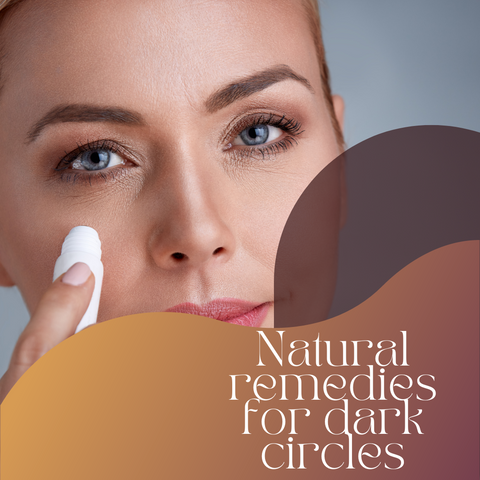
Dark circles under the eyes can be caused by a number of factors, including genetics, ageing, allergies, and a lack of sleep. While natural remedies can help reduce their appearance, they may not provide instant or complete results. Consistency and patience are key when using natural remedies. Here are some natural options to consider:
-
Cold Compress: Using a cold compress, such as a cold spoon or a wet washcloth, can constrict blood vessels and reduce puffiness.
-
Aloe Vera: Apply a small amount of fresh aloe vera gel to the under-eye area. Aloe vera has anti-inflammatory and moisturising properties.
-
Potato Slices: For about 10-15 minutes, place thin potato slices over your eyes. Potatoes contain natural bleaching agents that may help to lighten dark circles.
-
Rose Water: Soak a cotton ball in rose water and gently dab it under the eyes. Rose water can be used to soothe and revitalise the skin.
-
Tomato Paste: Combine tomato juice and a little lemon juice and apply to dark circles. Tomatoes have natural bleaching properties.
-
Coconut Oil: Gently massage a few drops into the under-eye area. The skin can be nourished and moisturised with coconut oil.
-
Almond Oil: Gently massage a few drops of almond oil into the skin around the dark circles. Rich in vitamin E, almond oil can help smooth out the texture of the skin.
-
Turmeric Paste: To make a paste, combine a small amount of powdered turmeric with pineapple juice. After applying it to the dark circles and letting it sit for ten minutes or so, rinse it off. Turmeric contains skin-brightening and anti-inflammatory qualities.
-
Mint Leaves: Apply the juice from freshly crushed mint leaves to dark circles. The cooling properties of mint can aid in the reduction of puffiness.
-
Hydration: To stay properly hydrated, sip lots of water. Dark circles may become more noticeable if you are dehydrated.
-
Diet and Nutrition: Eat a diet high in fruits and vegetables, especially those that are high in antioxidants and vitamins C and K. These nutrients may help maintain healthy skin.
-
Sleep: Make sure you get enough good sleep. In order to minimise dark circles, try to get between 7 and 9 hours of sleep each night.
-
Handling Allergies: Seek professional assistance from a healthcare provider to effectively manage your allergies if they are a contributing factor to your dark circles.
Cucumber slices for cooling and soothing

Cucumber slices are a well-known and efficient natural cure for cooling and relieving a variety of skin problems. Cucumber slices are frequently used for this purpose because of their cooling effect, anti-inflammatory qualities, hydration, and puffiness reduction. Cucumber slices can be used to chill and soothe:
-
Preparation: Begin by thoroughly washing a cucumber to remove any dirt or pesticides. You can leave the skin on because it contains additional nutrients, or you can peel it.
-
Chill: For a more refreshing experience, chill the cucumber for a few hours before using. Cold cucumber slices can have a stronger cooling effect.
-
Slicing: Thinly slice the cucumber. You can cut rectangular slices for other parts of your face or round slices to cover your eyes.
-
Application: Apply the cucumber slices gently to the area of your skin that needs cooling or soothing. These can be used on the face, eyes, or other places as necessary.
-
Relax: Lie down or sit back and relax for about 10-15 minutes with the cucumber slices in place. You can close your eyes and relax while enjoying the cooling sensation.
-
Rinse: After the allotted time, remove the cucumber slices and, if desired, rinse your skin with cool water.
In hot weather or when your skin is feeling irritated, cucumber slices are an easy and natural way to soothe and nourish your skin. They can be used as a stand-alone treatment or in conjunction with other skincare remedies to maximise their effectiveness.
Tea bags: A caffeine boost for your eyes
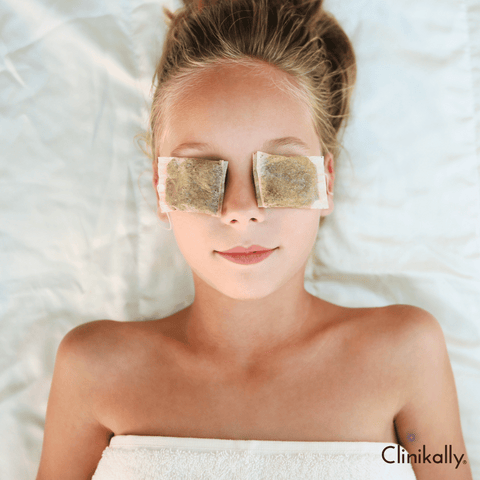
Tea bags, particularly those containing caffeine-rich teas like green tea or black tea, can be an excellent way to revitalise and freshen the appearance of your eyes. Here's how tea bags, particularly ones containing caffeine, might give your eyes a "caffeine boost":
-
Reducing Puffiness: Caffeine has vasoconstriction capabilities, which means it can constrict blood vessels. Caffeine-containing tea bags placed on the eyes can help constrict blood vessels and reduce puffiness, especially in the under-eye area. As a result, tea bags are frequently used to treat under-eye puffiness and dark circles.
-
Antioxidant Benefits: Tea, particularly green tea, is high in antioxidants such as catechins. These antioxidants can help protect the sensitive skin around your eyes from free radical damage, which can lead to accelerated aging and skin problems.
-
Skin Tightening: The brief skin-tightening effect of caffeine in tea can help the skin around your eyes feel firmer and appear less saggy. This can lessen the appearance of droopy or fatigued eyes.
Using tea bags to revitalise weary or swollen eyes, minimise the look of dark circles, and enjoy the antioxidant benefits of tea can be a quick and cost-effective approach to revitalise tired or puffy eyes. While this treatment can provide brief alleviation and a rejuvenated appearance, it may not produce long-term or noticeable benefits. Consider contacting a dermatologist or eye care specialist for professional guidance and treatment options if you have persistent or severe eye problems.
Rose water: Nature's astringent

Rose water is known as "nature's astringent" due to its inherent astringent properties and several skincare benefits. Rose water is recognised as a great and natural astringent for a variety of reasons, including astringent characteristics, skin tone, anti-inflammatory and calming properties, hydration, and antioxidant benefits. Rose water can be used as a natural astringent and in your skincare routine in the following ways:
-
Cleaning: To gently cleanse the skin and get rid of impurities and dirt, use rose water.
-
Toning: To tone your skin, use rose water after cleansing. You can spritz it straight onto your face or apply it with a cotton pad.
-
Face Mist: Especially in hot or dry weather, keep a bottle of rose water on hand as a facial mist to revitalise your skin throughout the day.
-
Makeup Remover: Rose water works well for both removing and reviving makeup throughout the day.
-
Additives for DIY Masks: Use rose water as a base for other skincare ingredients or as an ingredient in DIY face masks.
-
Hair Care: To encourage healthy hair and scalp, rose water can also be used. It can help reduce dandruff, balance the pH of the scalp, and give your hair more shine.
-
Bath Additive: For a calming and hydrating soak, add rose water to your tub.
For optimal effects, it is critical to select pure rose water of the highest calibre that does not contain any artificial additives or fragrances. You can take advantage of rose water's astringent and other advantageous qualities by incorporating it into your skincare routine. This will leave your skin feeling renewed and revitalised.
Professional treatments for under-eye circles

Professional treatments for under-eye circles, also known as dark circles, can be effective for individuals seeking more immediate and dramatic results compared to over-the-counter products and home remedies. Dermatologists or licensed skincare professionals often perform these treatments. Here are some common professional treatments for under-eye circles:
-
Dermal Fillers: Dermal fillers, such as hyaluronic acid-based fillers, can be injected under the eyes to add volume and fill in hollow areas, which can help reduce the appearance of dark circles. These fillers provide immediate results and can last for several months to over a year.
-
Platelet-Rich Plasma (PRP) Therapy: PRP therapy involves drawing a small amount of your blood, processing it to isolate the platelet-rich plasma, and then injecting it under the eyes. PRP contains growth factors that can stimulate collagen production and improve skin texture and color.
-
Chemical Peels: Chemical peels, specifically formulated for the under-eye area, can help improve skin texture, reduce pigmentation, and stimulate collagen production. Glycolic acid, lactic acid, and other peeling agents are commonly used.
-
Laser Therapy: Various laser treatments, such as fractional laser or intense pulsed light (IPL), can target pigmentation, stimulate collagen production, and improve skin texture in the under-eye area.
-
Microneedling: Microneedling involves using tiny, sterile needles to create controlled micro-injuries in the skin, which can stimulate collagen production and improve skin texture and color. It is often combined with topical treatments like serums or PRP.
-
Lower Eyelid Surgery (Blepharoplasty): In some cases, surgical procedures can be considered to address under-eye circles. Lower eyelid surgery can involve removing excess skin, fat, or tissue, and repositioning or tightening the skin to reduce puffiness and dark circles.
-
Topical Prescriptions: In some instances, dermatologists may prescribe topical creams or ointments that contain ingredients like hydroquinone, tretinoin, or other compounds to help lighten and improve the appearance of dark circles.
-
Combination Therapies: Many dermatologists recommend combining treatments for a more comprehensive approach. For example, combining dermal fillers with a laser treatment or microneedling can provide enhanced results.
-
Professional Chemical Peels: Dermatologists can perform deeper chemical peels, like trichloroacetic acid (TCA) peels, which can help improve the appearance of dark circles by exfoliating the top layers of skin and stimulating collagen production.
It's essential to consult with a qualified dermatologist or skincare professional to determine the most suitable treatment for your specific under-eye circles, as the choice will depend on the underlying causes and individual skin type. Keep in mind that professional treatments may require multiple sessions for optimal results, and there can be associated risks and downtime, so discuss these factors with your healthcare provider before proceeding.
Chemical peels for skin brightening

Chemical peels can be an effective treatment for skin lightening, tone, and texture improvement. The application of a chemical solution to the skin causes the top layers to exfoliate, revealing fresher, healthier skin beneath. Chemical peels can treat a variety of skin issues, such as hyperpigmentation, uneven skin tone, fine wrinkles, and dullness. Here's how chemical peels can help brighten your skin:
-
Chemical peels remove the top layer of dead skin cells, leaving the skin looking drab and uneven. Exfoliation aids in the removal of surface pigmented cells, revealing brighter, smoother skin.
-
Some chemical peels increase collagen formation, a protein that improves skin firmness and suppleness. A more youthful and bright complexion might result from increased collagen production.
-
Chemical peels can effectively address hyperpigmentation issues such as sunspots, melasma, and post-inflammatory hyperpigmentation. They aid in the breakdown of excess melanin and the promotion of even skin tone.
-
Chemical peels can help improve the appearance of mild acne scars by removing the top layers of skin and stimulating the growth of new, smoother skin.
-
Chemical peels can lessen the appearance of wrinkles, fine lines, and rough patches, which will leave the skin feeling more even and smoother.
Finding the best kind of chemical peel for your unique skin type and concerns requires speaking with a dermatologist or other skincare specialist. Following a chemical peel, proper post-treatment care, such as sun protection and skincare, is essential for maintaining the results and reducing the risk of complications.
Laser treatments and their effectiveness

Laser treatments are popular and effective treatments for a variety of dermatological and cosmetic issues. They use concentrated, strong laser beams to target and cure specific skin disorders. The efficiency of laser treatments is determined by the type of laser used, the individual's skin type and condition, and the experience of the healthcare professional doing the procedure. Here are some examples of common laser treatments and their efficacy for specific concerns:
-
Fractional Laser Resurfacing: Fractional laser treatments, like fractional CO2 and fractional erbium lasers, are extremely successful for enhancing skin texture, minimising fine lines and wrinkles, and treating scars. They stimulate collagen formation and promote skin renewal by inflicting tiny, regulated micro-injuries in the skin. Acne scars, surgical scars, stretch marks, fine lines, and wrinkles are all examples of scars.
-
IPL (Intense Pulsed Light): IPL treatments can effectively treat pigmentation, redness, and vascular disorders on the skin. They are less intrusive than conventional laser treatments and function by focusing on certain skin flaws. Sunspots, age spots, redness, damaged blood vessels, and rosacea are all examples of skin imperfections.
-
Q-Switched Lasers: Q-switched lasers, such as the Q-switched Nd:YAG and Q-switched ruby lasers, are extremely successful for tattoo removal and pigmented lesion treatment. They reduce the visibility of pigments in the skin by breaking them down. Tattoo removal, melasma, freckles, and birthmarks are all options.
-
Alexandrite Lasers: Because of their high melanin absorption, Alexandrite lasers are efficient for hair removal. They attack the hair follicles, resulting in long-term hair loss. Unwanted hair on numerous parts of the body.
-
Pulsed Dye Lasers: Pulsed dye lasers are useful for treating vascular lesions and skin redness. They specifically target haemoglobin in blood vessels, causing them to tighten and fade. Spider veins, port-wine stains, and vascular birthmarks are all examples of vascular birthmarks.
-
Er:YAG Lasers: Ablative skin resurfacing is performed with Er:YAG lasers. By removing the top layers of skin, they can effectively treat moderate to severe wrinkles, acne scars, and pigmentation disorders. Wrinkles, acne scars, and pigmentation are all signs of aging.
-
CO2 Lasers: CO2 lasers, particularly fractionated CO2, are extremely successful for skin resurfacing and treating deeper wrinkles and scars. They offer more visible skin renewal but may necessitate a longer recuperation period. Deep wrinkles, acne scars, skin laxity, and UV damage are all signs of aging.
Fillers: Plumping up the under-eye area

Dermal fillers are a popular and successful treatment for plumping up the under-eye area, which can assist with issues including hollowing, dark circles, and the look of weary or sunken eyes. Dermal fillers are primarily made of hyaluronic acid, a naturally occurring molecule in the body that aids in moisture retention and skin volume. Dermal fillers, when injected into the under-eye area, can increase volume, smooth out wrinkles and fine lines, moisturise the skin, and stimulate collagen synthesis. For several reasons, dermal fillers are particularly effective in treating under-eye concerns:
-
Fillers can add volume to sunken or hollow areas under the eyes, making them look more refreshed and youthful.
-
Fillers can help reduce the appearance of dark circles by filling in hollows that cast shadows, resulting in a smoother and brighter under-eye appearance.
-
Tear troughs are the grooves that run between the lower eyelid and the cheek. Fillers can be used to soften and fill these depressions, resulting in a more natural and less noticeable transition between the lower eyelid and cheek.
-
Fillers can be used to camouflage or reduce the appearance of mild puffiness in some cases by adding volume to adjacent areas, resulting in a more even and youthful contour.
The length of the results varies based on the type of filler used and personal circumstances. Typically, the effects can last anywhere from 6 months to 2 years or more. Maintenance treatments may be required to maintain the results over time. Dermal fillers should only be used by a qualified and experienced healthcare practitioner, such as a board-certified dermatologist or plastic surgeon, who can analyse your individual concerns and provide safe and effective therapy. They can also talk about the risks, benefits, and post-treatment care to help you get the best results.















